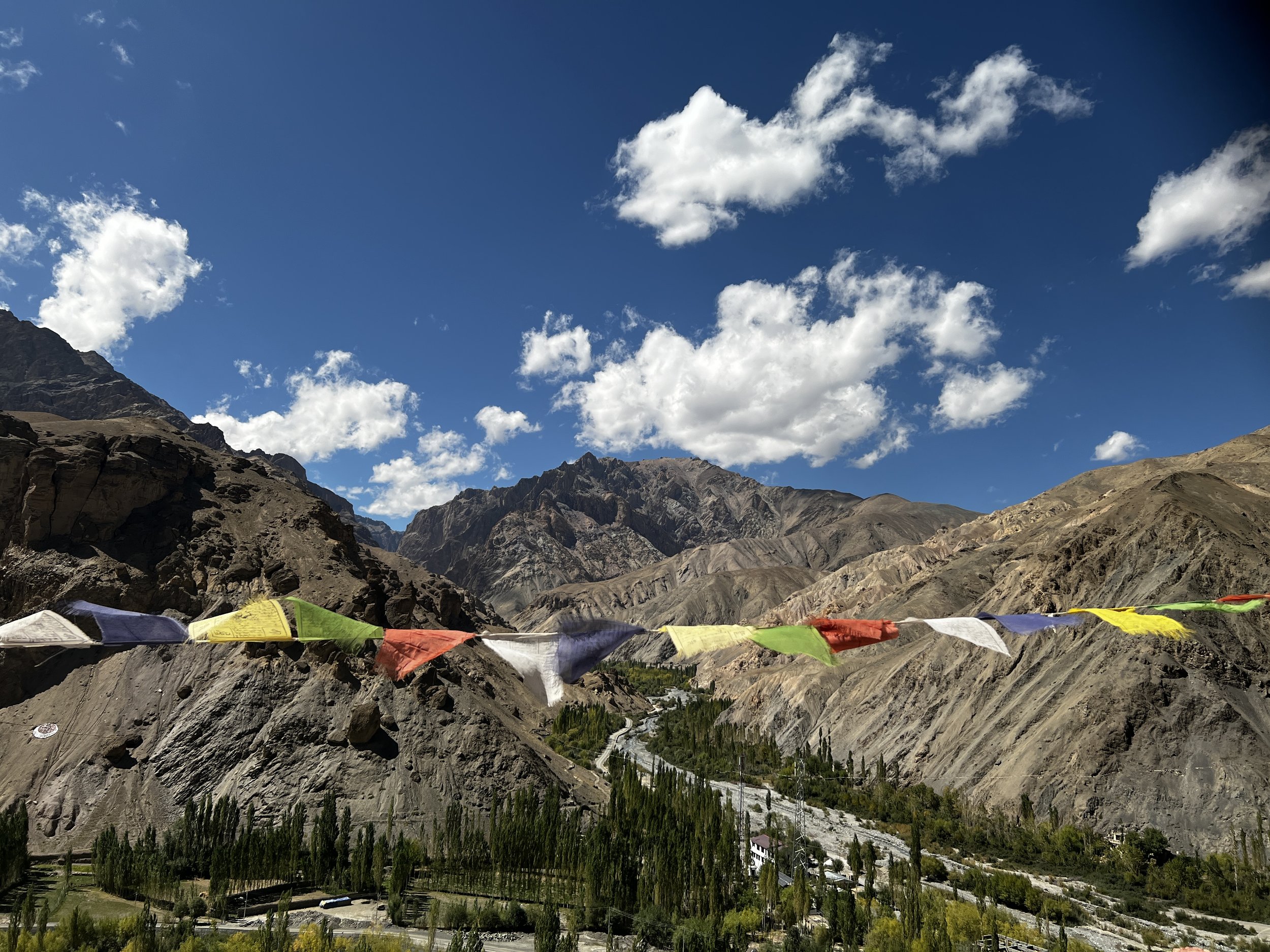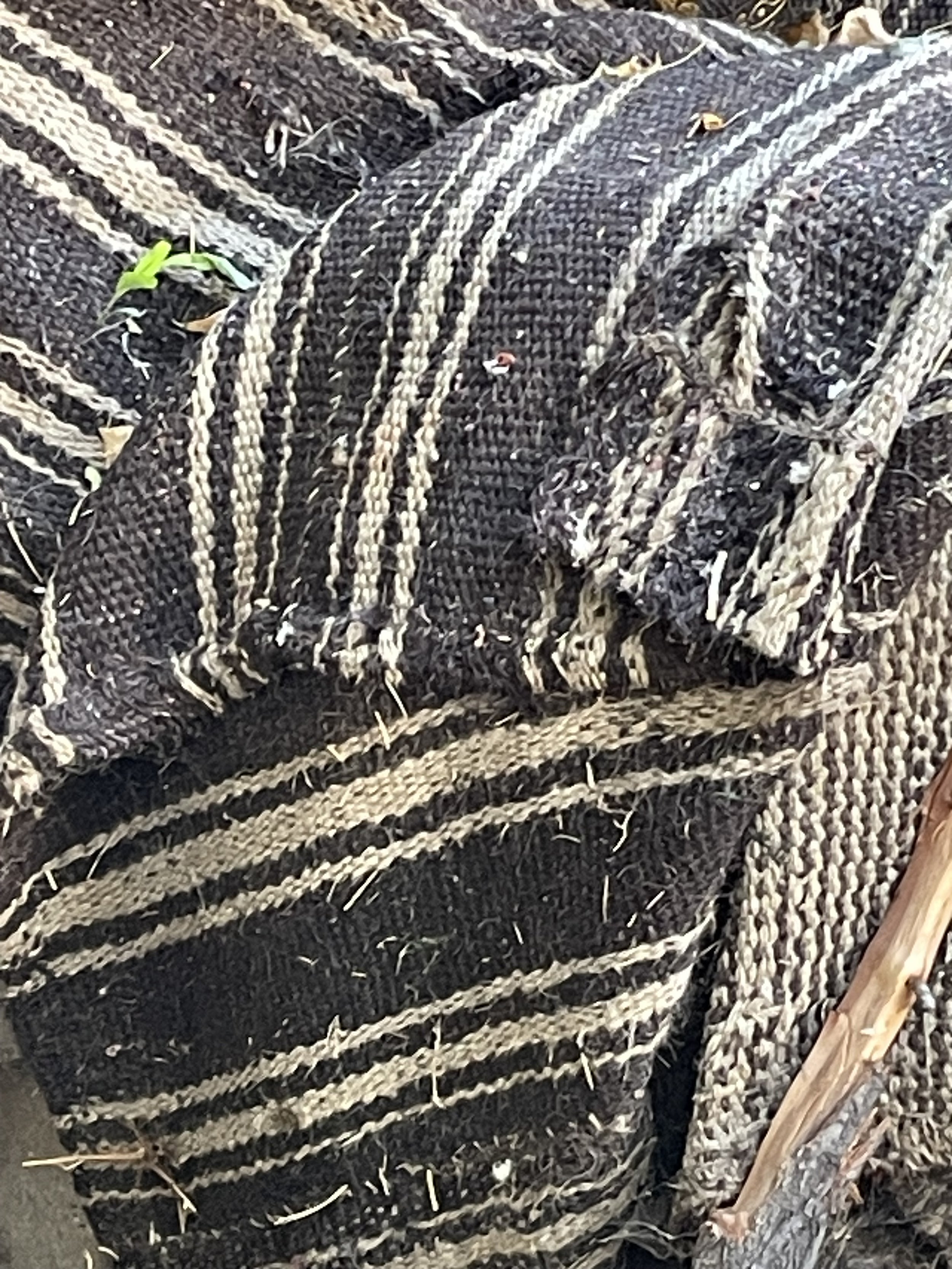From the Himalayas to Kutch - thoughts on textiles from the Western Himalayas.
A Sunday morning spent in the Craft Museum, Delhi is always insightful. We did the mask exhibits, weird and charming, and then began the slow perambulation around the textiles. The information board at the entrance of the textile rooms talks about the vocabulary of India’s weaving, and I always come away having learnt something new.
This time, as we trundled through the weaving of north-eastern India, we were struck by the similarity of pattern of Nagaland weaving to the geometric patterns of African textiles. Adjacent to the mask room was a brilliantly dark and moody exhibition of tribal carvings from South India, and not far from this were some Nagaland wooden statues, somehow African in feel.
Geographically it made no sense, as Nagaland is in the far far east of India, and the connections to East Africa in particular tends to be on the west coast of India where the trade winds carried boats back and forward to the likes of Lamu and Mombasa. Gujarat has long had trading links with the eastern Horn of Africa, and in Nairobi fabric shops like Daramjee’s we’d see bolts of fabric sourced from India. As a child I drank Fanta on the huge pile of wool rugs while my mother arranged for curtains to be made. One of my guests did a quick google later on, and found that there had been an Ethiopian presence pre-Christ. Stranger things have happened in India.
It crosses my mind that the craft museum would benefit from a geographical exhibition outlining the temporal and spatial trading routes of the raw wools and cottons, the spun thread, and then the finished product as these were traded east, west, north, south and out of India along traditional trading routes. Ladakhi pashm finds its way to Srinagar where it is spun into fine Kashmiri shawls, and embroidered by talented ladies into extraordinary creations. I spotted hand looms from Bhuj in the Delhi Cottage Emporium, offered by a gentleman and lady as a pop-up stall. The shawls have a distinctive extra weft in Bhujodi, and easily spotted once you’ve seen it being done on the loom. The shawls on offer felt like a tangible link to Kutch, all at once an energetic fingerprint of the weaver and a happy memory. Prices were almost double but then it was Delhi.
In the Victorian market in Leh which is now a beautiful pedestrianised road, I spotted an old, traditional ladies costume from the higher Ladakhi tribal areas with tie-dyed patterns on vegetable-dyed wool.
If I hadn’t been to a talk by Monisha Ahmed in London and seen slides, I wouldn’t have recognised it. These costumes were made by families for their own use, and not traded across India. The patterns are flower motifs, set in as a skirt panelled in the round. The design of the round skirt that creates a full circle when it is spun by the wearer is found across India, in mountain wool, in Rajasthani cotton, in the dancing skirts of the North. Traditional costumes tend to be worn by the older ladies, the young dashing about in kurtas and jeans or readymades from China. We found a shop called Nomadic Woollen Mills who are working with Bactrian camel wool, quite unlike the itch I bought in Pushkar, much softer and woven in both warp and weft. The colour was a caramel brown, camel coloured, and handloomed. So much more lovely than the Ludhiana machine-made, synthetic knock-offs. They were selling cashmere wrist warmers by the hundred to dealers from Japan, who with impeccable taste will be merchandising these beautifully and adding their appropriate margin.
The cotton shawls of Kutch are not for sale here in Leh. The souvenir shops are run by Kashmiris at home with the wools and pashm of the colder Kashmere, and their stock consists largely of embroidered cashmere shawls, a few Himachal weaves, and various silks. Most of the fabrics were blends. There is little room for a handwoven cotton in the cool of the mountains, and again, costume fits the meteorology. The Ladakhi pashmina shawls we’ve seen in Leh seem to be a relatively new invention by NGOs and development agencies using locally spun and woven wool, as traditional Ladakhi weaving went into tent making, items for household use, clothing to felt, coarser shawls and blankets and travel bags. Taking traditional weaves and local materials, the shawls we’ve seen so far feel like a little piece of mountain nirvana.
In September 2025 I’m weaving my way up the Kullu Valley and then onto Leh, leading a two week tour in the foothills of the Himalayas and then higher into Ladakh. Details are on the Tours page - and you are most welcome to join me. And then onto Kutch, Gujurat in November 2025.
Gujurat in November is delightful. The textiles tour 2025 begins in October, in Ahmedabad and the focus tightens onto Gujurat, with a visit to the Calico Museum (if we can get on the list!) and then onto the salt pans of the Little Rann of Kutch. From there we head into the textile heartland of Bhuj, and spend time exploring the weaving, dyeing and decorative techniques of the highly skilled artisans. Studio visits and Ajrakh block-dyeing workshops in Bhujodi are on the itinerary.
Boutique hotels and homestays, local food, and fantastic local guides make the tour excellent. I run responsible, sustainable tours that are winning awards. Come with me to the Himalayas in September 2025 or Kutch in November 2025 to meet the artisans that weave your shawls, support their work directly, and come home with a suitcase full of wonderful woven memories.






















